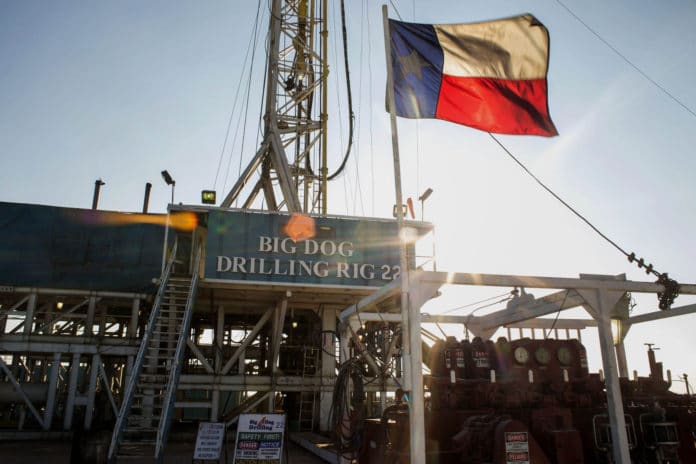When the Organization of Petroleum Exporting Countries started its price war, the U.S. shale boom looked doomed.
Two years and one OPEC policy u-turn later, executives at the annual Oil & Money conference in London painted an upbeat outlook for shale, with giants like Exxon Mobil Corp. and ConocoPhillips saying the industry hasn’t just survived the bust, but will continue to have a global influence.
“We have confirmed the viability of a very large resource base in North America,” said Exxon Chief Executive Officer Rex Tillerson. “Never bet against the creativity and tenacity of this segment of our industry.”
The consequences will reverberate through the energy industry and the world economy. A cohort of shale producers ready to boost output when prices rise could cap any recovery at about $60 a barrel for the next couple of years, regardless of any OPEC moves to cut production. Instead of falling victim to the Saudi-led battle for market share, Tillerson said the industry will provide the “spare capacity” to meet future demand.
It’s a view that puts Tillerson at odds with some of the industry most powerful voices, including Khalid Al-Falih, the Saudi energy minister, and Patrick Pouyanne, the CEO of French oil giant Total. Both men warned that two years of low prices and investment cuts have left the global industry ill equipped to supply enough oil by the end of the decade.
“Many analysts are now sounding warning bells about future supply shortfalls and I am in that camp,” Al-Falih said.
Whether a shortage arrives by the turn of the next decade is yet to be seen. Fatih Birol, executive director of the International Energy Agency, said that oil prices of about $50 to $60 a barrel can stimulate enough supply for short-term needs until 2020. The Paris-based adviser has also warned about the long-term impact of unprecedented cuts in spending.
In the meantime, the industry’s nearly unanimous view is that shale output can grow again. The U.S. Energy Information Administration expects crude production to start rising again in the first quarter of 2017, reaching 8.8 million barrels a day by the end of next year from about 8.4 million now.
That would still be short of the 9.6 million barrel-a-day peak in June 2015. Still, after a two-year price war the industry has emerged battle-hardened, with executives saying over panel discussions and cocktail parties in London that they are more optimistic now they can weather low prices.
ConocoPhillips CEO Ryan Lance told the conference on Tuesday that U.S. shale output will “come back strongly” supported by lower costs. New oil wells are viable in the Permian, Eagle Ford and Bakken shale basins at just $40 a barrel, he said.
“The oil price is essentially unchanged from the conference last year, but the tone from the companies seemed more optimistic,” said Lydia Rainforth, oil equity analyst at Barclays in London. “Most speakers at the conference referenced $50 to $60 a barrel as a reasonable oil price for the oil market near term.”
Junk Bonds
In an unusually open speech, Andrew Gould, board director at state-owned Saudi Arabian Oil Co., said that a $50-to-$60 a barrel price would be “sufficient to develop the low-cost resources to provide increases that will be necessary over the next three to four years.”
West Texas Intermediate, the U.S. oil benchmark, rose as high as $51.93 a barrel on Tuesday, the highest since July 2015.
Perhaps the best indicator of the changing fortune of shale is the plunge in yields of junk energy debt. At its worst in February, investors sold off shale bonds, pushing yields to a record 21 percent. Today, they are trading at 7 percent, a level similar to when oil traded at about $100 a barrel.
“The equity and debt market is open for U.S. shale companies”, said David Foley, CEO of Blackstone Energy Partners, the private equity fund. After a two-year hiatus, initial public offerings have returned to the American oil patch, with Extraction Oil & Gas raising $633 million this month.
It isn’t just shale producers expressing more optimism. Major oil companies also hailed a new environment, with BP Plc CEO Bob Dudley saying the company will be able to balance its books next year at about $55 a barrel, not far above current prices.
For OPEC, there’s cause for both celebration and concern. After a two-year war downturn that wreaked economic havoc in several member countries, oil is trading at the highest level in more than a year and the prospect of a return to $30 or lower seems remote. While the group can claim that it has successfully set a floor for prices, the resilience of its rivals means the ceiling may not be too far away.
—
Bloomberg contributors: Annmarie Hordern, Emma Graham and Grant Smith.






